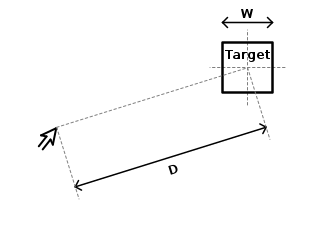Related Research Articles
Computer programming is the process of performing a particular computation, usually by designing and building an executable computer program. Programming involves tasks such as analysis, generating algorithms, profiling algorithms' accuracy and resource consumption, and the implementation of algorithms. The source code of a program is written in one or more languages that are intelligible to programmers, rather than machine code, which is directly executed by the central processing unit. The purpose of programming is to find a sequence of instructions that will automate the performance of a task on a computer, often for solving a given problem. Proficient programming thus usually requires expertise in several different subjects, including knowledge of the application domain, specialized algorithms, and formal logic.

Cognitive science is the interdisciplinary, scientific study of the mind and its processes with input from linguistics, psychology, neuroscience, philosophy, computer science/artificial intelligence, and anthropology. It examines the nature, the tasks, and the functions of cognition. Cognitive scientists study intelligence and behavior, with a focus on how nervous systems represent, process, and transform information. Mental faculties of concern to cognitive scientists include language, perception, memory, attention, reasoning, and emotion; to understand these faculties, cognitive scientists borrow from fields such as linguistics, psychology, artificial intelligence, philosophy, neuroscience, and anthropology. The typical analysis of cognitive science spans many levels of organization, from learning and decision to logic and planning; from neural circuitry to modular brain organization. One of the fundamental concepts of cognitive science is that "thinking can best be understood in terms of representational structures in the mind and computational procedures that operate on those structures."

Natural language processing (NLP) is a subfield of linguistics, computer science, and artificial intelligence concerned with the interactions between computers and human language, in particular how to program computers to process and analyze large amounts of natural language data. The goal is a computer capable of "understanding" the contents of documents, including the contextual nuances of the language within them. The technology can then accurately extract information and insights contained in the documents as well as categorize and organize the documents themselves.

Fitts's law is a predictive model of human movement primarily used in human–computer interaction and ergonomics. The law predicts that the time required to rapidly move to a target area is a function of the ratio between the distance to the target and the width of the target. Fitts's law is used to model the act of pointing, either by physically touching an object with a hand or finger, or virtually, by pointing to an object on a computer monitor using a pointing device. It was initially developed by Paul Fitts.
Computer science is the study of the theoretical foundations of information and computation and their implementation and application in computer systems. One well known subject classification system for computer science is the ACM Computing Classification System devised by the Association for Computing Machinery.
Interaction design, often abbreviated as IxD, is "the practice of designing interactive digital products, environments, systems, and services." Beyond the digital aspect, interaction design is also useful when creating physical (non-digital) products, exploring how a user might interact with it. Common topics of interaction design include design, human–computer interaction, and software development. While interaction design has an interest in form, its main area of focus rests on behavior. Rather than analyzing how things are, interaction design synthesizes and imagines things as they could be. This element of interaction design is what characterizes IxD as a design field as opposed to a science or engineering field.
The following outline is provided as an overview of and topical guide to human–computer interaction:
GOMS is a specialized human information processor model for human-computer interaction observation that describes a user's cognitive structure on four components. In the book The Psychology of Human Computer Interaction. written in 1983 by Stuart K. Card, Thomas P. Moran and Allen Newell, the authors introduce: "a set of Goals, a set of Operators, a set of Methods for achieving the goals, and a set of Selections rules for choosing among competing methods for goals." GOMS is a widely used method by usability specialists for computer system designers because it produces quantitative and qualitative predictions of how people will use a proposed system.
Human-centered computing (HCC) studies the design, development, and deployment of mixed-initiative human-computer systems. It is emerged from the convergence of multiple disciplines that are concerned both with understanding human beings and with the design of computational artifacts. Human-centered computing is closely related to human-computer interaction and information science. Human-centered computing is usually concerned with systems and practices of technology use while human-computer interaction is more focused on ergonomics and the usability of computing artifacts and information science is focused on practices surrounding the collection, manipulation, and use of information.
In human–computer interaction, the keystroke-level model (KLM) predicts how long it will take an expert user to accomplish a routine task without errors using an interactive computer system. It was proposed by Stuart K. Card, Thomas P. Moran and Allen Newell in 1980 in the Communications of the ACM and published in their book The Psychology of Human-Computer Interaction in 1983, which is considered as a classic in the HCI field. The foundations were laid in 1974, when Card and Moran joined the Palo Alto Research Center (PARC) and created a group named Applied Information-Processing Psychology Project (AIP) with Newell as a consultant aiming to create an applied psychology of human-computer interaction. The keystroke-level model is still relevant today, which is shown by the recent research about mobile phones and touchscreens.

User interface (UI) design or user interface engineering is the design of user interfaces for machines and software, such as computers, home appliances, mobile devices, and other electronic devices, with the focus on maximizing usability and the user experience. In computer or software design, user interface (UI) design primarily focuses on information architecture. It is the process of building interfaces that clearly communicates to the user what's important. UI design refers to graphical user interfaces and other forms of interface design. The goal of user interface design is to make the user's interaction as simple and efficient as possible, in terms of accomplishing user goals.
Cognitive complexity describes cognition along a simplicity-complexity axis. It is the subject of academic study in fields including personal construct psychology, organisational theory and human–computer interaction.
Cognitive ergonomics is a scientific discipline that studies, evaluates, and designs tasks, jobs, products, environments and systems and how they interact with humans and their cognitive abilities. It is defined by the International Ergonomics Association as "concerned with mental processes, such as perception, memory, reasoning, and motor response, as they affect interactions among humans and other elements of a system. Cognitive ergonomics is responsible for how work is done in the mind, meaning, the quality of work is dependent on the persons understanding of situations. Situations could include the goals, means, and constraints of work. The relevant topics include mental workload, decision-making, skilled performance, human-computer interaction, human reliability, work stress and training as these may relate to human-system design." Cognitive ergonomics studies cognition in work and operational settings, in order to optimize human well-being and system performance. It is a subset of the larger field of human factors and ergonomics.
Cognitive dimensions or cognitive dimensions of notations are design principles for notations, user interfaces and programming languages, described by researcher Thomas R.G. Green and further researched with Marian Petre. The dimensions can be used to evaluate the usability of an existing information artifact, or as heuristics to guide the design of a new one, and are useful in Human-Computer Interaction design.
Secondary notation is the set of visual cues used to improve the readability of a formal notation. Examples of secondary notation include the syntax highlighting of computer source code, sizes and color codes for easy recognition of consumer symbols such as bank notes or coins, or the regular typographic conventions often found in technical books to highlight sections with the same type of content.
Gender HCI is a subfield of human-computer interaction that focuses on the design and evaluation of interactive systems for humans. The specific emphasis in gender HCI is on variations in how people of different genders interact with computers.

An interaction technique, user interface technique or input technique is a combination of hardware and software elements that provides a way for computer users to accomplish a single task. For example, one can go back to the previously visited page on a Web browser by either clicking a button, pressing a key, performing a mouse gesture or uttering a speech command. It is a widely used term in human-computer interaction. In particular, the term "new interaction technique" is frequently used to introduce a novel user interface design idea.

Human–computer interaction (HCI) is research in the design and the use of computer technology, which focuses on the interfaces between people (users) and computers. HCI researchers observe the ways humans interact with computers and design technologies that allow humans to interact with computers in novel ways. A device that allows interaction between human being and a computer is known as a "Human-computer Interface (HCI)".
Alan F. Blackwell is a New Zealand-British cognition scientist and professor at the Computer Laboratory, University of Cambridge, known for his work on diagrammatic representation, on data and language modelling, investment modelling, and end-user software engineering.
Marian Petre is a British computer scientist and Professor of Computing at the Open University and Director of its Centre for Research in Computing (CRC), known for her work on Visual Programming Environments, and co-developed the concept of cognitive dimensions of notations.
References
- ↑ Scaife, Mike, and Yvonne Rogers. "External cognition: how do graphical representations work?." International journal of human-computer studies 45.2 (1996): 185-213.
- ↑ Jacko, Julie A., ed. Human Computer Interaction Handbook: Fundamentals, Evolving Technologies, and Emerging Applications. CRC press, 2012.
- ↑ William Sims Bainbridge (2004). Berkshire Encyclopedia of Human-computer Interaction. p. 794
- ↑ Areas of Research Interest Archived 4 March 2016 at the Wayback Machine at Thomas Green, home page. Accessed 13.04.2015.
- ↑ Thomas R. G. Green at DBLP Bibliography Server